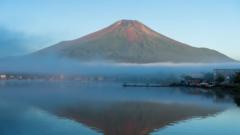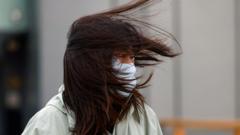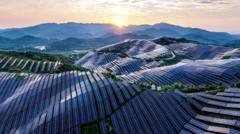Mount Fuji is now confirmed to be snowless later in the year than any previous records show, marking a shift in the weather patterns over Japan and posing questions about climate change's impact on the region.
Mount Fuji Experiences Record-Breaking Snowless Stretch This October

Mount Fuji Experiences Record-Breaking Snowless Stretch This October
Latest weather patterns lead to the highest mountain in Japan remaining bare later than ever before.
Mount Fuji, Japan's iconic peak, has recently set a new record for the latest date without snow cover since recording began 130 years ago. Traditionally, the mountain begins to accumulate snowfall by early October; however, this year it remains completely bare. In 2023, the first snow appeared on the summit only on October 5, according to reports from the AFP news agency.
This unprecedented lack of snow can be attributed to exceptionally warm weather, with Japan experiencing its hottest summer on record. Average temperatures from June to August reached an astounding 1.76°C (35.1°F) above normal. In September, the warm trend continued as the subtropical jet stream shifted northward, bringing warmer air from the south into the region.
Japanese Meteorological Society reported that nearly 1,500 locations experienced "extremely hot" days, defined as temperatures soaring to or above 35°C (95°F), during September. Despite October's temperatures slightly lowering, they still remain abnormally warm for this time of year.
The lack of snowfall as November approaches sets a new record for wait time on Mount Fuji, as the previous late snowfall dates occurred on October 26 in both 1955 and 2016. According to Yutaka Katsuta, a meteorologist at Kofu Local Meteorological Office, this year marks a significant deviation from historical weather patterns.
Mount Fuji stands at 3,776 meters (12,460 feet) and is not only Japan's tallest mountain but also an active volcano, having last erupted over 300 years ago. The mountain provides breathtaking views from Tokyo on clear days and has a cherished place in traditional Japanese artworks, including prominent woodblock prints. Last year, over 220,000 climbers ascended the summit between July and September.






















